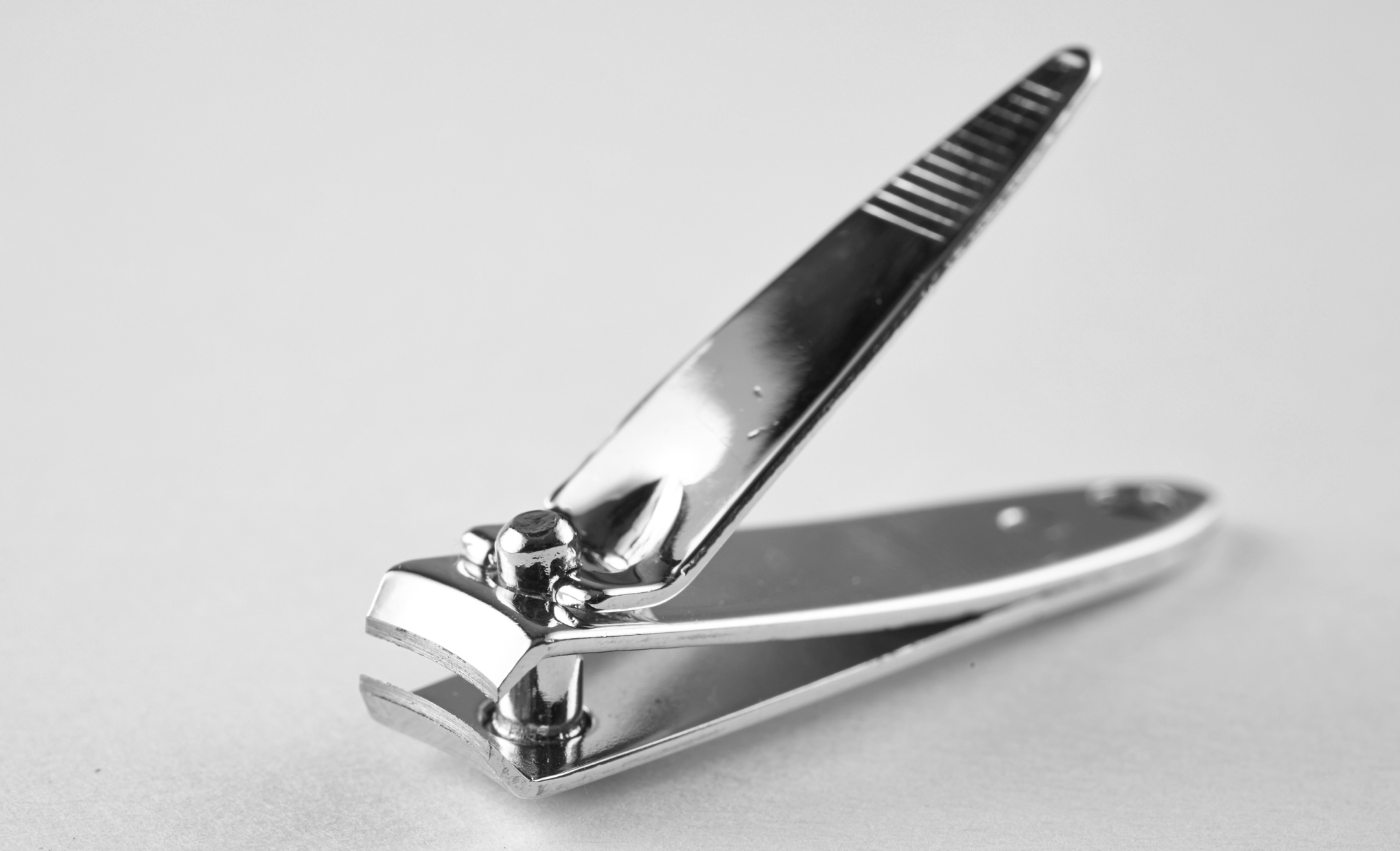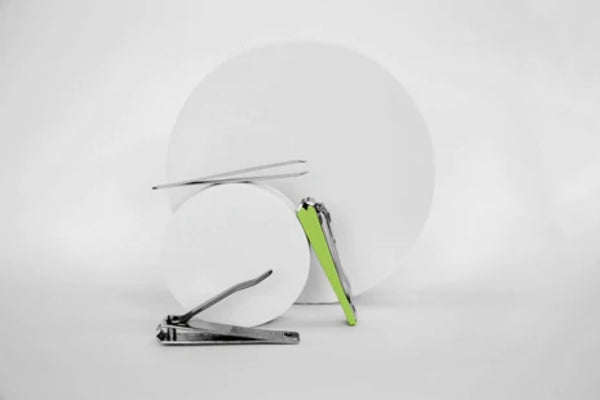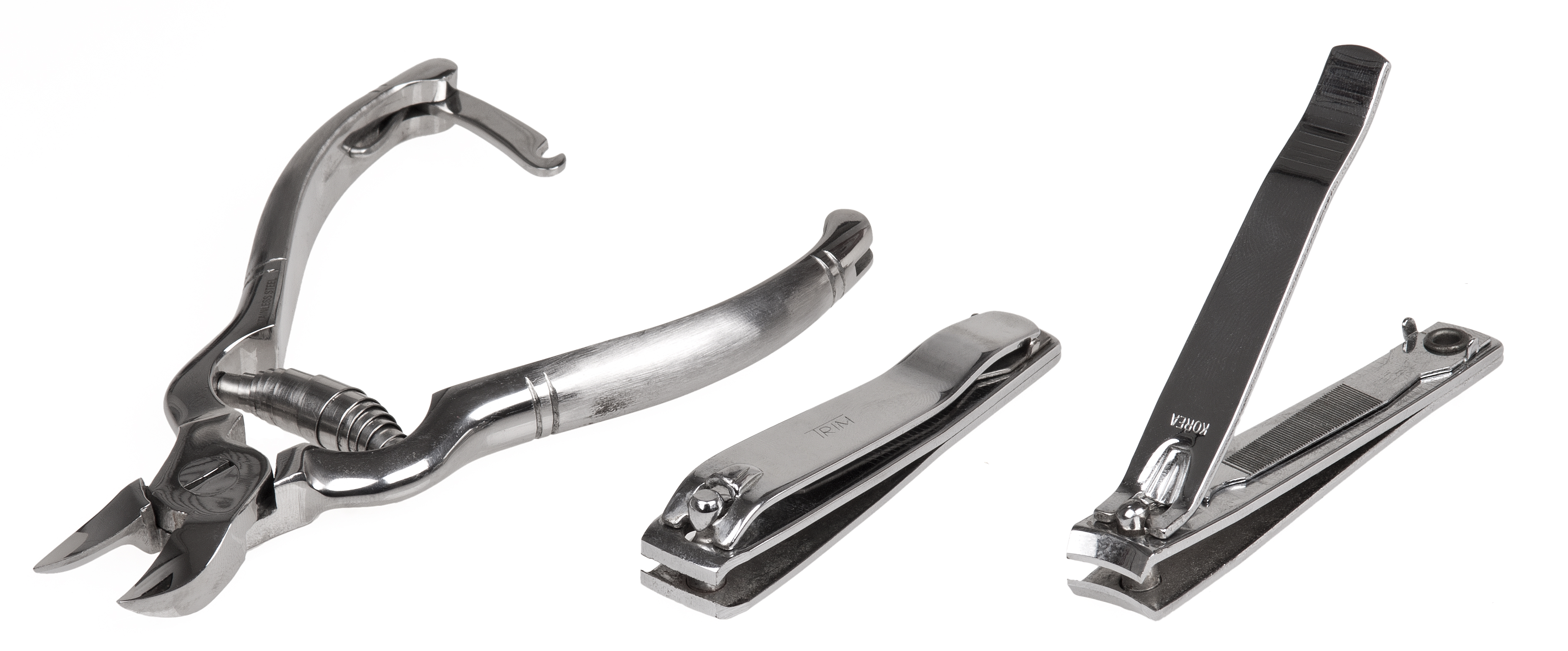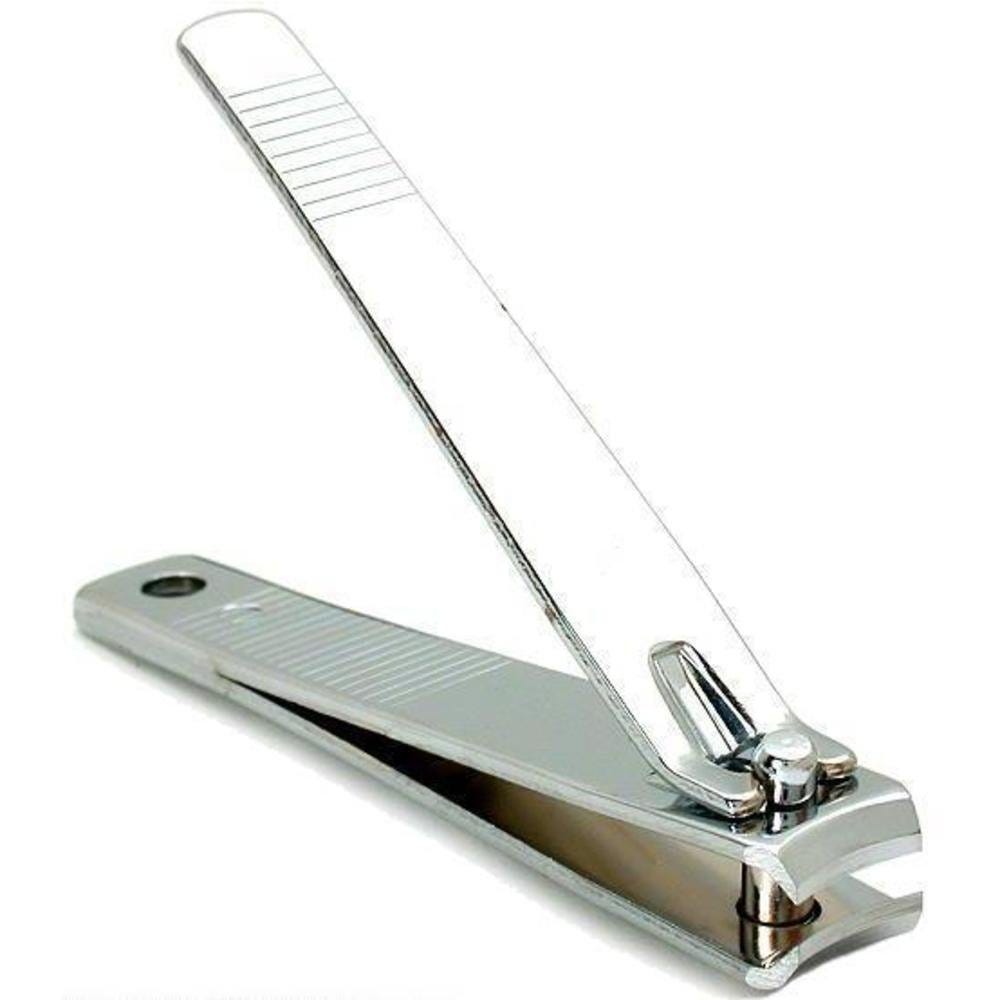Introduction To Nail Clippers

Nail clippers are a common personal care tool used to trim and shape the nails. They provide a convenient and efficient way to groom and maintain nail hygiene. Whether it’s for cosmetic reasons or to prevent ingrown nails, nail clippers play an important role in personal grooming routines. They are compact, easy to use, and come in various designs and sizes to cater to different needs. Nail clippers have come a long way in their evolution, and their invention has revolutionized nail grooming practices across cultures and time periods. Let’s delve into the fascinating origins and inventors of this essential grooming tool.
Brief History Of Nail Grooming
Nail grooming has been practiced for centuries and holds cultural and hygienic significance. The earliest evidence of nail care dates back to ancient Egypt, where both men and women utilized nail grooming tools made from precious metals. In ancient China, long nails were a symbol of wealth and status, while in Greece, shorter nails were preferred. The Renaissance period saw the rise of manicures and the use of specialized tools. Nail grooming has evolved over time, with the invention of nail clippers revolutionizing the way we trim and shape our nails.
Importance Of Nail Clippers In Personal Care
Nail clippers play a crucial role in personal care, as they enable individuals to maintain clean, well-groomed nails. Regular trimming of nails with nail clippers helps prevent the accumulation of dirt and bacteria under the nails, reducing the risk of infections. It also aids in preventing nail breakage and ingrown nails, promoting overall nail health. Additionally, neatly trimmed nails enhance the appearance of hands and feet, giving a polished and professional look. Nail clippers are essential tools for maintaining hygiene, preventing nail-related issues, and achieving a neat and presentable appearance.
Ancient Origins Of Nail Grooming Tools

The practice of nail grooming dates back to ancient civilizations, where people used rudimentary tools to trim their nails. In ancient Egypt, nail care was highly valued, and Egyptians used various methods such as metal files and pumice stones to shape and smooth their nails. The ancient Greeks also paid attention to their nails, using small knives or scrapers called “onychos” to clean and trim them. In ancient China, ivory or tortoise shell nail clippers were used, demonstrating the early existence of specialized tools for nail care. These ancient origins showcase the importance of nail grooming throughout history.
Early Nail Grooming Techniques
In the absence of modern nail grooming tools, ancient civilizations developed various techniques to groom their nails. These early methods involved the use of primitive tools and materials. For instance, the ancient Egyptians would shape and smooth their nails using metal files and pumice stones. The ancient Greeks utilized small knives or scrapers called “onychos” to clean and trim their nails. In ancient China, ivory or tortoise shell nail clippers were employed. These early nail grooming techniques highlight the importance placed on nail care and the resourcefulness of ancient cultures.
Earliest Known Nail Clippers And Their Inventors
The earliest known nail clippers and their inventors can be traced back to the late 19th and early 20th centuries. In 1875, Valentine Fogerty designed the first patent for a nail clipper, although it was more of a circular nail file. In 1886, Hungarian inventor David Gestetner patented a finger-nail cutter, followed by Chapel S. Carter in 1905, who later received another patent in 1922. These early inventors laid the foundation for modern nail clippers, revolutionizing nail grooming practices for generations to come.
Evolution Of Nail Clippers In Europe

During the medieval period, nail care in Europe was primarily done with knives or scissors. However, in the Renaissance era, there was a shift towards more specialized tools. Inventors began creating early versions of nail clippers, with some designs featuring a lever-like mechanism. These early European nail clippers were often made of iron or brass, reflecting the materials commonly used at the time. The design and functionality of the clippers continued to evolve over the centuries, leading to the modern nail clippers we are familiar with today.
Medieval Nail Care Practices And Tools
During the medieval period, nail care in Europe was often neglected and considered low priority. Personal hygiene was not given much importance, and as a result, nail grooming was minimal. The nails were usually trimmed with knives or scissors, which were not specifically designed for this purpose. The lack of specialized tools meant that nail care was often uncomfortable and imprecise. However, as the Renaissance era approached, there was a shift towards more specialized grooming tools, including the development of early versions of nail clippers.
Innovations In Nail Clippers During The Renaissance
During the Renaissance, there were notable advancements in nail grooming tools, including nail clippers. The Renaissance period saw a shift towards more specialized grooming practices, and nail care was no exception. Innovations in nail clippers during this time included the introduction of spring-loaded mechanisms, which made trimming nails easier and more efficient. These new designs allowed for controlled and precise cutting, improving the overall nail grooming experience. The Renaissance era marked an important milestone in the evolution of nail clippers, setting the stage for further developments in personal grooming tools.
Nail Clippers In Asia

Asia also has a rich history of ancient nail grooming traditions, dating back thousands of years. In countries like China, Japan, and India, nail care was considered an important part of personal hygiene and symbolized social status. Traditional Asian nail clippers were often made of metal or bone and featured intricate designs. These clippers were handcrafted with precision and were known for their durability. Some of the inventors credited with the development of these traditional Asian nail clippers include Zhang Pengfei from China and Toshio Kaneko from Japan. The influence of these ancient Asian grooming practices can still be seen in modern nail care techniques and tools today.
Ancient Nail Grooming Traditions In Asia
Ancient nail grooming traditions in Asia have a long and rich history, dating back thousands of years. In countries like China, Japan, and India, nail care was considered an important part of personal hygiene and a symbol of social status. Asian cultures developed their own unique techniques and tools for nail care, such as nail clippers made of metal or bone adorned with intricate designs. These traditional practices and tools continue to influence modern nail care techniques in Asia and around the world.
Traditional Asian Nail Clippers And Their Inventors
In Asia, nail grooming has been an integral part of personal hygiene and social status for centuries. Traditional Asian nail clippers were crafted with intricate designs, often made from metal or bone. These clippers were invented by skilled craftsmen and inventors who perfected the art of nail care. In China, for example, nail clippers were believed to have been invented during the Ming Dynasty. The Asian cultures of China, Japan, and India developed their own unique techniques and tools for nail grooming, shaping the way nail care is still practiced in the region today.
Modern Nail Clippers And Innovations

Modern nail clippers have come a long way since their ancient origins. Today, they are designed with precision and efficiency in mind. Innovations in nail clipper technology have resulted in features such as ergonomic handles for comfortable grip, sharp and durable blades for clean cuts, and built-in nail catchers for easy cleanup. Additionally, there are now electric nail clippers available, offering automatic trimming for those with limited mobility. With these advancements, modern nail clippers have become an essential tool for maintaining clean and well-groomed nails. These innovations have revolutionized nail care, making it more convenient and effortless than ever before.
Development Of Modern Nail Clippers
The development of modern nail clippers has seen significant advancements in design and functionality. Today, nail clippers are designed with precision cutting blades made from durable materials such as stainless steel. They feature ergonomic handles that provide a comfortable grip, making nail trimming easier and more efficient. Modern nail clippers also come with built-in nail catchers that prevent nail clippings from scattering, making cleanup a breeze. Additionally, there are electric nail clippers available that offer automatic trimming for individuals with limited mobility. These innovations have revolutionized the nail care industry, making nail grooming more convenient and effortless than ever before.
Inventors And Patents Of Contemporary Nail Clippers
Inventors around the world have contributed to the development of contemporary nail clippers. In the early 20th century, inventors such as Maxwell E. Bastian and Jacob Schwozka filed patents for nail clippers with unique designs and features. Bastian’s patent in 1917 introduced a folding nail clipper, while Schwozka’s patent in 1922 focused on an improved lever system for easier cutting. In recent years, new inventors continue to innovate in the nail grooming industry, creating modern nail clipper designs with ergonomic handles, built-in nail catchers, and electric trimming capabilities. These inventions have transformed the way we care for our nails, providing convenience and efficiency in personal grooming routines.
Conclusion

In conclusion, nail clippers have a long and rich history that can be traced back to ancient times. From the rudimentary tools used by our ancestors to the modern, technologically advanced inventions of today, nail clippers have played a vital role in personal grooming. They have evolved over the years, thanks to the ingenuity of inventors who sought to improve their design and functionality. Today, nail clippers are an essential tool for maintaining hygiene and neatness. Whether it’s for grooming purposes or professional use, nail clippers continue to be an indispensable part of our daily lives.
Significance Of Nail Clippers In Personal Grooming
Nail clippers hold a significant role in personal grooming, providing a simple yet effective solution for maintaining neat and hygienic nails. They allow individuals to trim their nails with precision, preventing them from becoming too long or jagged. By keeping nails well-groomed, nail clippers contribute to overall hygiene and appearance. They also help to prevent the accumulation of dirt and bacteria under the nails, reducing the risk of infections. In addition, neatly trimmed nails give individuals a polished and put-together look. Nail clippers are essential tools in every individual’s personal care routine, ensuring clean and manicured nails.
Recap Of Nail Clippers’ Evolution And Inventors
The evolution of nail clippers has been a remarkable journey, starting from ancient techniques to the creation of modern nail grooming tools. Throughout history, inventors from different cultures have made crucial contributions to the development of nail clippers. From the early designs of ancient civilizations to the innovations of the Renaissance, each step has led to the efficient and precise nail clippers we use today. Some notable inventors include the Ancient Egyptians, Leonardo da Vinci, and Ralph Martens. Their inventions and improvements have revolutionized the way people groom their nails, ensuring cleanliness and a polished appearance.
Frequently Asked Questions about the Invention of Nail Clippers
Q: Who invented nail clippers?
A: Nail clippers were invented by a man named Valentine Fogerty in the late 19th century.
Q: When were nail clippers invented?
A: Nail clippers were invented in the late 19th century, but the exact date is uncertain. It is believed to be somewhere around the 1870s.
Q: Why were nail clippers invented?
A: Nail clippers were invented to provide a convenient and efficient tool for trimming nails. Before their invention, people used various makeshift methods, which were often time-consuming and less effective.
Q: How do nail clippers work?
A: Nail clippers are designed with two curved blades that come together when you squeeze the handles. When you place your nail between the blades and press, the blades cleanly cut the nail.
Q: Are nail clippers the same as nail scissors?
A: No, nail clippers and nail scissors are different tools. Nail clippers have a lever-like design with two blades that come together, while nail scissors have a scissor-like design with two separate blades.
Q: Can I use nail clippers on my toenails?
A: Yes, nail clippers are commonly used for trimming both fingernails and toenails. However, some nail clippers are specifically designed for thicker toenails and provide better leverage for cutting them.
Q: Has there been any improvement in nail clipper design since its invention?
A: While the basic design of nail clippers has remained relatively consistent since their invention, there have been some improvements in terms of ergonomics and blade sharpness. Today, you can find nail clippers with ergonomic handles for a more comfortable grip and sharper blades for precise cutting.
Q: Are there any alternatives to nail clippers?
A: Yes, there are a few alternatives to nail clippers. Some people prefer to use nail scissors or nail files for nail grooming. However, nail clippers are widely available, affordable, and easy to use, making them the preferred choice for many.
Q: Are there different types of nail clippers?
A: Yes, there are various types of nail clippers available on the market. Some common types include standard nail clippers, toenail clippers, baby nail clippers (with rounded edges), and travel-size nail clippers.
Q: Can nail clippers be used on pets?
A: Nail clippers designed for humans are generally not recommended for use on pets. Pets have different nail structures, and using human nail clippers can cause injury. It is advisable to use specialized pet nail clippers or consult a veterinarian for proper pet nail care.
In conclusion, nail clippers were invented by Valentine Fogerty in the late 19th century. They are a convenient tool for trimming nails and have undergone slight improvements in design over time. While they can be used on both fingernails and toenails, alternatives such as nail scissors and files also exist. It is important to use the correct type of nail clippers for different purposes and seek specialized tools for pet nail care.

I am proud to offer non-toxic beauty options. The gel polishes I offer are “9-Free”, free of nine of the most commonly found allergens and toxic chemicals in nail polish, and cruelty-free, vegan, and HEMA-free. The nail lacquers I offer range between “7-Free” and “16+-Free” and are also cruelty-free and vegan.